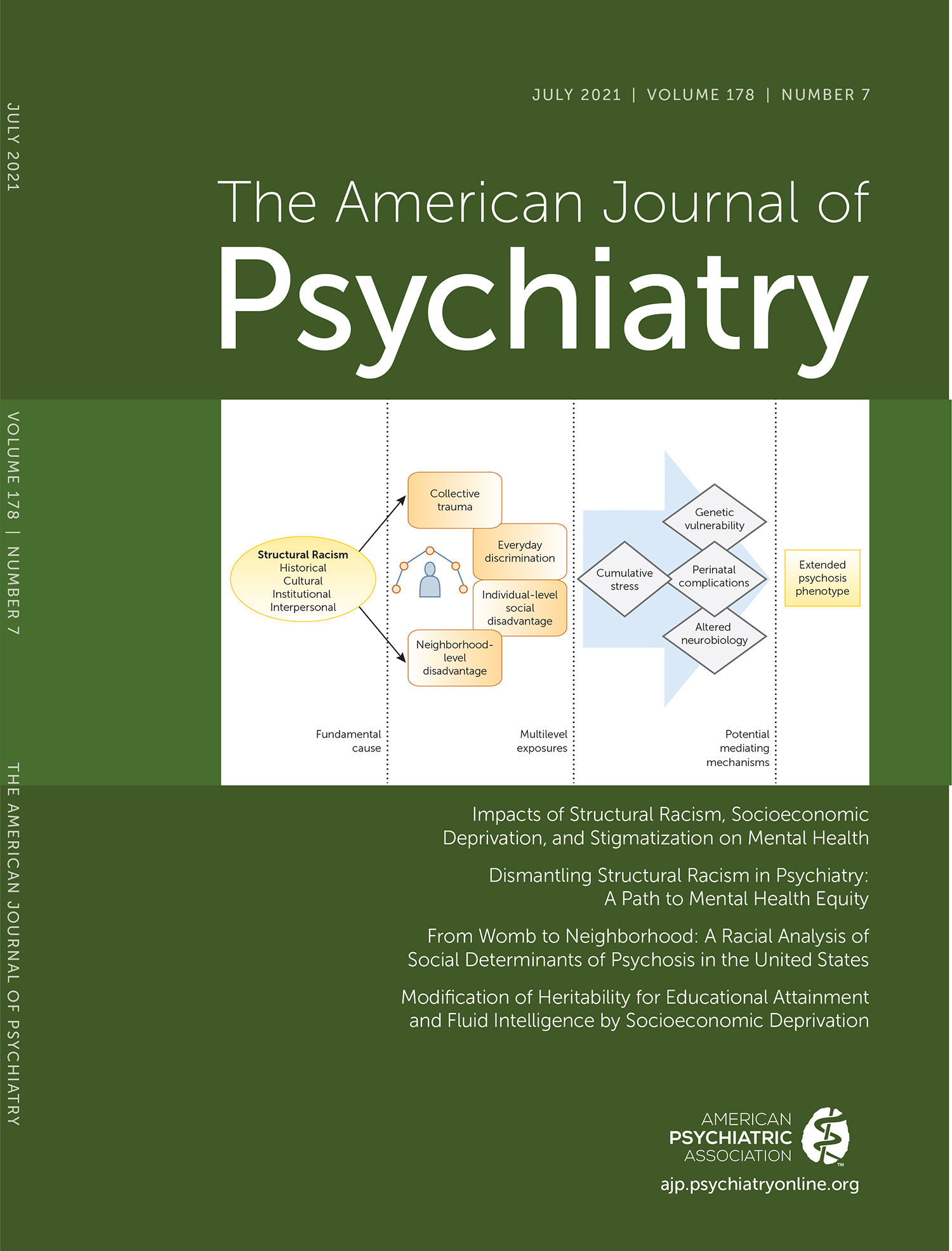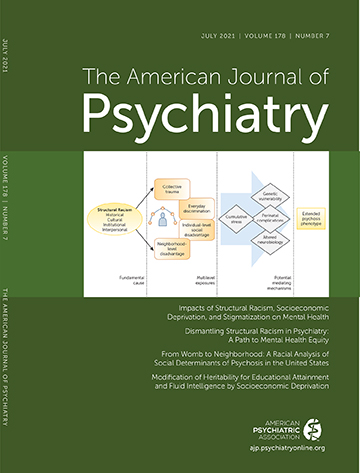Intelligence and educational attainment are both associated positively with many socioeconomic and physical and mental health outcomes (
1 –
3). Longitudinal studies have shown that individuals with a higher level of intelligence in early life are less likely to suffer from poor health and die from all causes, as well as from specific causes, including heart disease, stroke, respiratory disease, smoking-related cancers, digestive diseases, dementia, accidents, and suicide (
4). While strong phenotypic and genetic correlations between measures of intelligence and education have been observed (
5), analyses have indicated that both intelligence and education make unique, and possibly causal, contributions to both physical and mental health outcomes (
6,
7). As a consequence of their value in predicting physical and mental health, genome-wide association studies (GWASs) examining the genetic etiology of intelligence and education have identified hundreds of associated loci (
5,
8) and have demonstrated that both traits are heritable and highly polygenic, with contributions from across the frequency spectrum of alleles (
9).
In this issue, Rask-Andersen et al. (
10) report on a study using GWAS data to examine how the genetic contributions to educational attainment and intelligence interact with socioeconomic position. Socioeconomic position was assessed in the participants of UK Biobank using the Townsend deprivation index (TDI), a metric that describes the level of deprivation in the area where participants live and includes information on unemployment, overcrowding, and car and home ownership. The total cohort was then stratified into quintiles based on their TDI score. Two measures of education were included: first, a binary metric describing whether or not a participant attained a college or university level of education (N=359,094), and second, a continuous measure describing the number of years of education a participant had completed (N=362,488). Intelligence was assessed in 131,688 participants using the fluid intelligence test, often called the verbal numerical test, from UK Biobank. The verbal numerical test is a 13-point multiple-choice test in which participants must answer as many of the questions as they can in a 2-minute period.
Rask-Andersen et al. (
10) show that the genetic correlation between pairs of quintiles for educational attainment, years of education, and intelligence phenotypes was high, often approaching unity. This indicates that across the measured spectrum of socioeconomic position differences in the UK Biobank sample, many of the same genetic variants are associated with phenotypic differences of each of these three phenotypes. The qualified exception was that the genetic correlations of the fifth quintile with both the first and second quintiles were significantly different from 1 in both educational attainment and years of education. This indicates that different genetic variants give rise to observed phenotypic differences in education when comparing those living in the most deprived regions of the United Kingdom to those living in the least deprived regions.
Rask-Andersen et al. then show that the heritability of educational attainment, years of education, and intelligence is greater in those from more deprived backgrounds. Furthermore, a gene-environment interaction was identified between TDI score and the polygenic risk scores for educational attainment, years of education, and intelligence. When considered along with the genetic correlations between quintiles, Rask-Anderson et al. show that while the identity of the genetic variants associated with trait variation for these three phenotypes does not differ by socioeconomic position, the magnitude of their contributions does. Specifically, genetic effects explain a greater proportion of phenotypic variation for educational attainment, years of education, and intelligence in individuals from a more deprived socioeconomic position.
These are valuable findings that argue against the deterministic view that the presence of alleles associated with a trait is sufficient for a trait to manifest. On the contrary, Rask-Anderson et al. demonstrate that the effect of, largely, the same genetic variants (which do not change after conception) on education and intelligence can vary across different environments.
The study does have a number of limitations. First, the use of linkage disequilibrium score regression to measure heritability limits the study to capturing only variance attributable to common, well-imputed variants (
11). However, genetic variation that is not in linkage disequilibrium with genotyped single-nucleotide polymorphisms has also been shown to contribute to both intelligence and education (
9). The estimates of heritability attributable to rare variation and whether and how they are influenced by socioeconomic position will not be captured by the methods used in this study.
Second, while the genetic correlations between quintiles approach unity, the first and second quintiles differ significantly from the fifth quintile. This may indicate that the phenotypic contributions to intelligence and education differ between socioeconomic position groups. This could have been explored by examining the genetic correlations of intelligence and education with physical and mental health traits, as well as other traits, such as smoking and alcohol use. For example, should greater genetic correlations between intelligence and physical health be observed in a low-socioeconomic-position group when compared with those in a higher-socioeconomic-position group, then it would indicate that resilience to disease, for example, is more important for educational attainment and intelligence in the lower-socioeconomic-position group.
Third, as acknowledged by the authors, the study does not separate direct genetic effects from indirect genetic effects. Indirect genetic effects, also termed “genetic nurture effects,” can contribute toward heritability estimates in situations where the environment an individual is reared in is associated with the phenotype under investigation. This occurs because the rearing environment is partially explained by the genotype of the parents. Under such conditions, alleles that are present in the parent but not in the child may still influence the phenotype of the child, as they can contribute to these environmental differences (
12). Importantly, transmitted alleles (those shared between parent and offspring) can have an indirect effect (i.e., contribute toward the rearing environment) in addition to the direct effect. These indirect genetic effects (those that act on the environment the child is reared in) are indistinguishable from direct genetic effects (those that act on the child directly) using the methods of Rask-Anderson et al. to estimate heritability and derive polygenic risk scores.
Genetic nurture effects have been shown for educational attainment (
12), and heritability estimates conducted on within-family GWASs of intelligence and education (that control for indirect genetic effects) are smaller than those conducted at the population level (
13). Should the contribution of indirect genetic effects be greater in lower-socioeconomic-position groups, then the interpretation changes from an individual’s genetic predisposition playing a larger role in education and intelligence in a lower-socioeconomic-position environment to heritable parental traits playing a greater role in education and intelligence in individuals from lower-socioeconomic-position groups.
Finally, caution needs to be applied in the interpretation of the results gleaned by Rask-Anderson et al., and specifically for the notion that “socioeconomic deprivation interacts with human biology to magnify the genetic effects on educational and cognitive outcomes,” as this implies that genetic effects on cognitive and educational phenotypes will get smaller as the environment becomes more equal, such as in terms of opportunity for education. However, this is unlikely to be correct, as when the environmental causes of a specific trait become more equally distributed across a population, the heritability of that trait is expected to rise. The findings of Rask-Anderson et al. indicate that at the higher levels of socioeconomic deprivation (where heritability is high), the environmental antecedents of educational attainment and intelligence are more equally distributed (in the sense that they are more equally bad for those with higher TDI scores). Thus, while the average level of education is lower in this group, the proportion of phenotypic variance in cognitive and education phenotypes explained by genetic effects is greater because differences in the environment are smaller.

